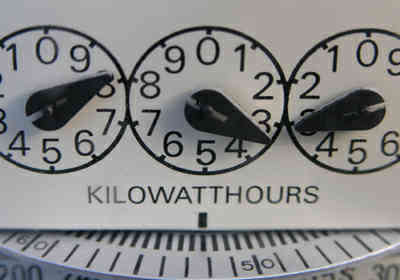Expert solutions to the energy-climate problem.
What
Credible, impartial, and actionable assessment to support policy and investment decisions.
Why
Achieving near-zero emissions means transforming the energy system.
How
Near Zero evaluates opportunities for progress towards near-zero emissions, based on scientific data, modeling, and the range of expert views.
Partner project: Expert elicitation survey on future wind energy costs
Using tools developed by Near Zero, a team of researchers has completed the largest expert survey yet on any energy technology.
Quantifying expert consensus against the existence of a secret, large-scale atmospheric spraying program
Well-understood physical and chemical processes can easily explain the alleged evidence of a secret, large-scale atmospheric spraying program, commonly referred to as “chemtrails”
An Unprecedented Push for Low-Carbon Energy Innovation
Expert Perspectives on R&D Opportunities for Mission Innovation
In May 2016, Near Zero gathered perspectives from 45 experts in Mission Innovation countries to explore opportunities for further low-carbon energy R&D. This report presents a selection from their responses.
Global Priorities for Zero-Emission Energy Innovation
An expert elicitation and discussion
To accelerate affordable, zero-emission energy at global scale, additional funds for research and development (R&D) should be allocated across a broad portfolio, according to a Near Zero expert elicitation—with experts on average allocating more than half the funds toward electricity generation and storage (35% of the total) and transportation (25% of the total).
The effect of natural gas supply on U.S. renewable energy and CO2 emissions
The increased use of natural gas for electricity would do little to reduce U.S. greenhouse gas emissions, according to this study, which combines energy modeling and a Near Zero expert elicitation of U.S. natural gas supply. This is primarily because abundant gas delays deployment of renewable electricity.
Keystone XL: The Climate Impact
An Expert Elicitation
Survey on how the proposed Keystone XL pipeline would affect future oil sands production and greenhouse gas emissions. Results suggest the pipeline would likely increase emissions, even if the production from KXL replaced an equivalent amount of heavy crude oils, or was transported by rail instead.
How Low Will Photovoltaic Prices Go?
Summary of a Near Zero Expert Elicitation
Prices for photovolatic modules—the part of solar panels that produce electricity— will continue to fall in line with the long-term trend, according to Near Zero's expert elicitation. Continuing this trend will require on-going committments to research.
Energy High in the Sky
Expert Perspectives on Airborne Wind Energy Systems
Government-funded R&D could help airborne wind energy—a burgeoning approach that harnesses high-altitude winds—to reach large scale quickly by overcoming some of the main technical barriers, according to a new expert survey by Near Zero.
Department of Energy Funding Priorities
An Expert Discussion
Discussion over the different factors that the Department of Energy should consider in allocating RD&D resources among energy technologies of disparate maturity and potential time to impact, and then evaluated specific technologies.
The Future of PHEVs
Expert Perspectives on Plug-in Hybrid Electric Vehicles
In preparation for a hearing of the U.S. Senate Energy & Natural Resources Committee, Near Zero invited 60 experts on plug-in hybrid electric vehicles to answer 5 questions on the future cost and environmental benefit of PHEVs.
Near Zero produces scientific assessments of energy and climate issues. Near Zero projects use innovative online tools to engage experts on the best opportunities for progress toward near-zero emissions, based on scientific data and expert judgment.
A guiding principle is to reveal where experts agree and disagree and why, highlighting areas of consensus and controversy rather than advocating any one perspective. Near Zero integrates this expert knowledge with quantitative modeling and analysis to demonstrate the implications of different views and potential choices. The result is a dynamic digital cache of credible, impartial, and actionable information to support policy and investment decisions.

